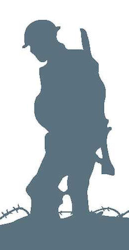Name
Charles Ernest Hobbs
14 August 1892
Conflict
First World War
Date of Death / Age
29/08/1915
23
Rank, Service Number & Service Details
Able Seaman
J/6420
Royal Navy
H.M. S/M. "C29"
Awards: Service Medals/Honour Awards
Navy Star, British War Medal and Victory medals
Cemetery/Memorial: Name/Reference/Country
CHATHAM NAVAL MEMORIAL
9
United Kingdom
Headstone Inscription
N/A
UK & Other Memorials
Hemel Hempstead Town Memorial,
St Mary's Church Memorial, Hemel Hempstead
Pre War
Charles Ernest Hobbs was born on 14 August 1892 in Chelsea, London, the son of Frederick and Mary Hobbs.
On the 1901 Census the family were living at 6 St George's Road, Kensington where his father was working as a Grocer's Assistant.
He joined the Royal Navy as a Boy on 14 August 1910 for a period of 12 years and initially trained at HMS Ganges, progressing to Ordinary Seaman and Able Seaman, serving on several ships. On the 1911 Census he was listed at the home of his cousin Walter Calkin and his wife Ada at 62 Station Road, Finchley with his occupation being given as Sailor AB.
He gave his next of kin on naval records as his sister Mabel M Hobbs of 3 Woodhouse Road, North Finchley, London.
His connection with Hemel Hempstead is not known, but sources suggest family members may have lived at 23 Queen Street and several Hemel Hempstead residents are listed with the surname Hobbs in 1911.
Wartime Service
At the outbreak of war he was serving on HMS Juno but then transferred to HMS Dolphin, a shore establishment at Fort Blockhouse, Gosport, which was the home of the Royal Navy Submarine Service.
He was killed in action on 29 August 1915 whilst serving on HM Submarine C29 when they ran into an unknown mine field in the Humber estuary and the submarine was lost with all hands. C29 was working with the trawler Ariadne in an operation against U-Boats and was being towed whilst almost submerged in a U-boat trap tactic. A decoy trawler was used to tow a submarine and when a U-boat was sighted, the tow line and communication line was slipped and the submarine would attack the U-boat. This tactic was abandoned after the loss of two C-class submarines.
Charles' name is commemorated on the Chatham Naval Memorial.
Acknowledgments
Brenda Palmer
Jonty Wild, rnsubs.co.uk, www.dacorumheritage.org.uk



